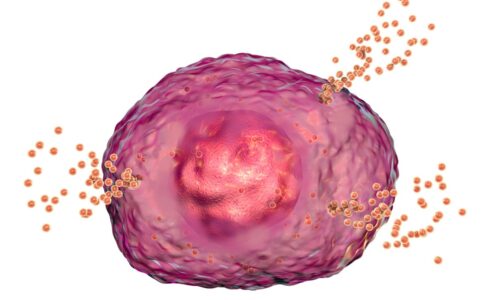https://www.youtube.com/watch?v=G_0AGPGAFME”]
Dr. Michael Renfrow, General Surgeon with Baptist Health South Florida, says the first two common presenting symptoms of hernia are pain and a mass in the abdominal wall, in the groin or the belly button area. He explains it can be a painless mass or a combination of the pain and the mass together.
He highlights it is important to get to a healthcare professional who deals with these issues to get properly worked up. They will feel the mass to see if there is a true hole in the abdominal wall, a soft tissue mass or a hernia.
Transcript
So at what point do you know what to do for that specific injury whether it’s a like, what are you looking forward to say need surgery, or let’s just give it some time.> So the first two common presenting signs or symptoms that a patient will have when they have a hernia is one of two things typically pain, or a bulge, or a mass in the abdominal wall, in the groin or the belly button area, and that can be a painless mass or it can be all a combination of the pain and the mass together, now that mass can be something else it could be a lymph node, it can be a soft tissue mass, so what’s really important is to get to a healthcare professional who deals with these issues to get properly worked up, and what they’ll do is examine you and typically any patient in my office I’ll examine them you know feel the mass, see if there’s a true hole in the abdominal wall, there’s whether it’s a soft tissue mass or a hernia, and if there’s any question at that time we’ll obtain either an ultrasound the CT scan or an MRI, to further workup an image that region to figure out exactly what’s happening, obviously the most important thing is figure out what you have first then you proceed to treating it.> So it’s a hernia like a life-threatening thing, like huh cuz I remember having a friend who said he had a hernia I didn’t know what it what it was, but he had this big bulge kind of in the in the lower abdomen area, and he had it for months, you never did anything about it so, what what can happen if you don’t really treat this thing?.> Hernia can be the simplest tiny little hernias extremely non life-threatening, very it can be a very simple surgery, and they can also be the most complex surgeries we do more complicated than you cancer procedure, depending on the size of the hernia whether there’s been previous surgery in that area, how many times the hernias come back and just the general size of the defect, a small hernia that’s reducible and what that means is you can push anything back in into the hole it is typically not life-threatening there’s nothing emergent about, it a hernia becomes life-threatening when the intestine goes into that hole and cannot be pushed back in, and at that point it’s called incarceration, and if it further gets stuck and cuts the blood supply off to the intestine, that’s referred to as strangulation and a strangulated hernia is a surgical emergency because typically within about eight hours the intestine can die, and if that happens it can break open and it really causes a massive infection, sepsis, and need two very terrible complications.
arve url=”https://www.youtube.com/watch?v=G_0AGPGAFME”]
Dr. Michael Renfrow, General Surgeon with Baptist Health South Florida, says the first two common presenting symptoms of hernia are pain and a mass in the abdominal wall, in the groin or the belly button area. He explains it can be a painless mass or a combination of the pain and the mass together.
He highlights it is important to get to a healthcare professional who deals with these issues to get properly worked up. They will feel the mass to see if there is a true hole in the abdominal wall, a soft tissue mass or a hernia.
Transcript
So at what point do you know what to do for that specific injury whether it’s a like, what are you looking forward to say need surgery, or let’s just give it some time.> So the first two common presenting signs or symptoms that a patient will have when they have a hernia is one of two things typically pain, or a bulge, or a mass in the abdominal wall, in the groin or the belly button area, and that can be a painless mass or it can be all a combination of the pain and the mass together, now that mass can be something else it could be a lymph node, it can be a soft tissue mass, so what’s really important is to get to a healthcare professional who deals with these issues to get properly worked up, and what they’ll do is examine you and typically any patient in my office I’ll examine them you know feel the mass, see if there’s a true hole in the abdominal wall, there’s whether it’s a soft tissue mass or a hernia, and if there’s any question at that time we’ll obtain either an ultrasound the CT scan or an MRI, to further workup an image that region to figure out exactly what’s happening, obviously the most important thing is figure out what you have first then you proceed to treating it.> So it’s a hernia like a life-threatening thing, like huh cuz I remember having a friend who said he had a hernia I didn’t know what it what it was, but he had this big bulge kind of in the in the lower abdomen area, and he had it for months, you never did anything about it so, what what can happen if you don’t really treat this thing?.> Hernia can be the simplest tiny little hernias extremely non life-threatening, very it can be a very simple surgery, and they can also be the most complex surgeries we do more complicated than you cancer procedure, depending on the size of the hernia whether there’s been previous surgery in that area, how many times the hernias come back and just the general size of the defect, a small hernia that’s reducible and what that means is you can push anything back in into the hole it is typically not life-threatening there’s nothing emergent about, it a hernia becomes life-threatening when the intestine goes into that hole and cannot be pushed back in, and at that point it’s called incarceration, and if it further gets stuck and cuts the blood supply off to the intestine, that’s referred to as strangulation and a strangulated hernia is a surgical emergency because typically within about eight hours the intestine can die, and if that happens it can break open and it really causes a massive infection, sepsis, and need two very terrible complications.
ve url=”https://www.youtube.com/watch?v=G_0AGPGAFME”]
Dr. Michael Renfrow, General Surgeon with Baptist Health South Florida, says the first two common presenting symptoms of hernia are pain and a mass in the abdominal wall, in the groin or the belly button area. He explains it can be a painless mass or a combination of the pain and the mass together.
He highlights it is important to get to a healthcare professional who deals with these issues to get properly worked up. They will feel the mass to see if there is a true hole in the abdominal wall, a soft tissue mass or a hernia.
Transcript
So at what point do you know what to do for that specific injury whether it’s a like, what are you looking forward to say need surgery, or let’s just give it some time.> So the first two common presenting signs or symptoms that a patient will have when they have a hernia is one of two things typically pain, or a bulge, or a mass in the abdominal wall, in the groin or the belly button area, and that can be a painless mass or it can be all a combination of the pain and the mass together, now that mass can be something else it could be a lymph node, it can be a soft tissue mass, so what’s really important is to get to a healthcare professional who deals with these issues to get properly worked up, and what they’ll do is examine you and typically any patient in my office I’ll examine them you know feel the mass, see if there’s a true hole in the abdominal wall, there’s whether it’s a soft tissue mass or a hernia, and if there’s any question at that time we’ll obtain either an ultrasound the CT scan or an MRI, to further workup an image that region to figure out exactly what’s happening, obviously the most important thing is figure out what you have first then you proceed to treating it.> So it’s a hernia like a life-threatening thing, like huh cuz I remember having a friend who said he had a hernia I didn’t know what it what it was, but he had this big bulge kind of in the in the lower abdomen area, and he had it for months, you never did anything about it so, what what can happen if you don’t really treat this thing?.> Hernia can be the simplest tiny little hernias extremely non life-threatening, very it can be a very simple surgery, and they can also be the most complex surgeries we do more complicated than you cancer procedure, depending on the size of the hernia whether there’s been previous surgery in that area, how many times the hernias come back and just the general size of the defect, a small hernia that’s reducible and what that means is you can push anything back in into the hole it is typically not life-threatening there’s nothing emergent about, it a hernia becomes life-threatening when the intestine goes into that hole and cannot be pushed back in, and at that point it’s called incarceration, and if it further gets stuck and cuts the blood supply off to the intestine, that’s referred to as strangulation and a strangulated hernia is a surgical emergency because typically within about eight hours the intestine can die, and if that happens it can break open and it really causes a massive infection, sepsis, and need two very terrible complications.
arve url=”https://www.youtube.com/watch?v=G_0AGPGAFME”]
Dr. Michael Renfrow, General Surgeon with Baptist Health South Florida, says the first two common presenting symptoms of hernia are pain and a mass in the abdominal wall, in the groin or the belly button area. He explains it can be a painless mass or a combination of the pain and the mass together.
He highlights it is important to get to a healthcare professional who deals with these issues to get properly worked up. They will feel the mass to see if there is a true hole in the abdominal wall, a soft tissue mass or a hernia.
Transcript
So at what point do you know what to do for that specific injury whether it’s a like, what are you looking forward to say need surgery, or let’s just give it some time.> So the first two common presenting signs or symptoms that a patient will have when they have a hernia is one of two things typically pain, or a bulge, or a mass in the abdominal wall, in the groin or the belly button area, and that can be a painless mass or it can be all a combination of the pain and the mass together, now that mass can be something else it could be a lymph node, it can be a soft tissue mass, so what’s really important is to get to a healthcare professional who deals with these issues to get properly worked up, and what they’ll do is examine you and typically any patient in my office I’ll examine them you know feel the mass, see if there’s a true hole in the abdominal wall, there’s whether it’s a soft tissue mass or a hernia, and if there’s any question at that time we’ll obtain either an ultrasound the CT scan or an MRI, to further workup an image that region to figure out exactly what’s happening, obviously the most important thing is figure out what you have first then you proceed to treating it.> So it’s a hernia like a life-threatening thing, like huh cuz I remember having a friend who said he had a hernia I didn’t know what it what it was, but he had this big bulge kind of in the in the lower abdomen area, and he had it for months, you never did anything about it so, what what can happen if you don’t really treat this thing?.> Hernia can be the simplest tiny little hernias extremely non life-threatening, very it can be a very simple surgery, and they can also be the most complex surgeries we do more complicated than you cancer procedure, depending on the size of the hernia whether there’s been previous surgery in that area, how many times the hernias come back and just the general size of the defect, a small hernia that’s reducible and what that means is you can push anything back in into the hole it is typically not life-threatening there’s nothing emergent about, it a hernia becomes life-threatening when the intestine goes into that hole and cannot be pushed back in, and at that point it’s called incarceration, and if it further gets stuck and cuts the blood supply off to the intestine, that’s referred to as strangulation and a strangulated hernia is a surgical emergency because typically within about eight hours the intestine can die, and if that happens it can break open and it really causes a massive infection, sepsis, and need two very terrible complications.








